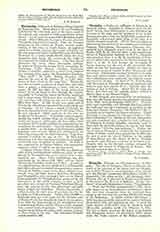

Nicopolis, Diocese of (NICOPOLITANA), in Bulgaria. The city of Nicopolis (Thrace or Moesia), situated at the junction of the Iatrus with the Danube, was built by Trajan in commemoration of his victory over the Dacians (Ammianus Marcellinus, XXXI, 5; Jornandes, “De rebus geticis”, ed. Savagner, 218). Ptolemy (III, xi, 7) places it in Thrace and Hierocles in Moesia near the Haemus or Balkans. In the “Ecthesis” of pseudo-Epiphanius (Gelzer, “Ungedruckte…Texte der Notitiae episcopatuum”, 535), Nicopolis figures as an autocephalous archbishopric about 640, and then disappears from the episcopal lists, owing to the fact that the country fell into the hands of the Bulgarians. Le Quien (Oriens christianus, I, 1233) has preserved the names of two ancient bishops: Mareellus in 458, and Amantius in 518. A list of the Latin titulars (1354-1413) may be found in Eubel (Hierarchia catholica medii nevi, Munster, I, 381). The city is chiefly noted for the defeat of the French and Hungarian armies (September 25, 1396) which made the Turks masters of the Balkan peninsula. The Latin mission of Bulgaria, subject during the sixteenth century to the Archbishops of Antivari, afterwards received Franciscan missionaries from Bosnia, and in 1624 formed an independent province called “custodia Bulgariae”. In 1763 it was confided to the Baptistines of Genoa and in 1781, to the Passionists who have no canonical residences in the country, simply parishes. One of them is usually appointed Bishop of Nicopolis. The Franciscan bishops formerly resided at Tchiprovetz, destroyed by the Turks in 1688, but after the war and the pestilence of 1812, the bishop established himself at Cioplea, a Catholic village which the Bulgarians had just founded near Bucharest and where his successors resided until 1883, when the Holy See created the Archbishopric of Bucharest. The Bishop of Nicopolis, ceasing then to be apostolic administrator of Wallachia, chose Roustchouk as his residence and still lives there. In the diocese there are 13,000 Catholics; 24 priests, 5 of whom are seculars; 17 Passionists and 2 Assumptionists; 15 churches, and 3 chapels. The Assumptionists have a school at Varna, the Oblates of the Assumption a boarding-school in the same city, and the Sisters of Our Lady of Sion a boarding-school at Roustchouk.
S. VAILHE

